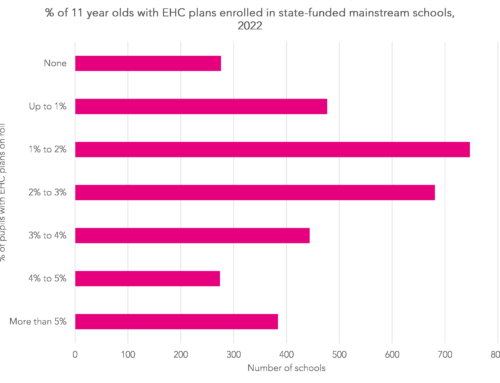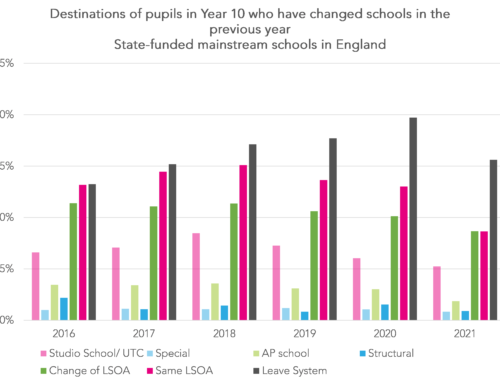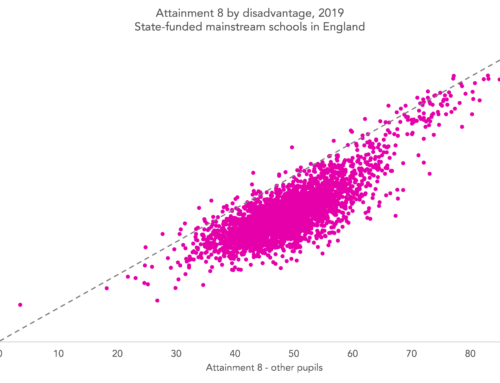
Passing the 11-plus isn’t the only way to get into a Kent grammar school, as we’ve seen. Headteacher panels review around 2,000 pupils each year, with approximately half the reviews leading to an assessment that the child is suitable for grammar school.
The four headteacher panels give a child’s primary school headteacher the opportunity to refer any assessment decisions they disagree with to a panel of local primary and secondary school heads.
The panel decide whether the child would suit a grammar school using additional evidence – test scores, the writing task that is not graded, and any recent work and assessments their headteacher provides.
The chart below shows the total standardised 11-plus score of those entered for the headteacher panel from all schools. A majority of those entered for the headteacher panel achieved an aggregated score of over 320, but failed to reach the minimum mark in one or more individual papers.
Are the headteacher panels an effective way of identifying highly able students who did not achieve high 11-plus scores? Or should Kent save themselves time and simply award these spare places to the next tranche of highest scorers on the 11-plus?
The 11-plus test and the headteacher panel take place before a child takes Year 6 SATs tests. SATs data can therefore be used as a point of reference that can be used to see whether headteacher panels succeed in identifying some able students who happened not to perform well in the 11-plus[1].
The chart below shows KS2 performance for Kent Test-takers who achieved an 11-plus score of between 315 and 319 (note that the x-axis shows KS2 scores, though the numbers involved are very similar to 11-plus scores). Those passing the headteacher panel are slightly skewed towards the higher attaining end of the spectrum, as we’d expect. But there are very high attaining students whose primary headteacher failed to enter them for the panel, and other high attainers who were put forward but who failed in the panel.
The data for a group who scored more highly in the 11-plus, between 325 and 329, shows a similar pattern. Those who go on to achieve weaker KS2 results are more frequently failed by the panel, but there are some very low achievers who are passed.
This might not be a problem. SATs in themselves shouldn’t be considered a perfect measure of ability. But we can consider it to some extent extra evidence of ability. So do headteacher panels identify different children for admission to grammar school to those that would be identified if the next highest-scoring pupils in the 11-plus were let in?
Not really. If we compare the overall SATs scores of these two groups – those passed by the current headteacher panel versus the next best passers on 11-plus score alone – they are almost identical (mean of 326.9 versus 326.8; standard deviation of 9.8 versus 9.6).
This suggests that the primary and secondary headteachers may be no better than a test at deciding who the most academically capable children are. So we would question how much it corrects for issues that exist with the test.
Conclusion
Headteacher panels may be no better at identifying the most academically capable children than the 11-plus tests themselves. This probably limits the extent to which this part of the process corrects for issues that exist with the test.
1. The data available means it is only possible to do this for a 50% sample of test-takers who are in Kent state primary schools and we cannot split the analysis geographically into the four headteacher panels, unfortunately.








Leave A Comment